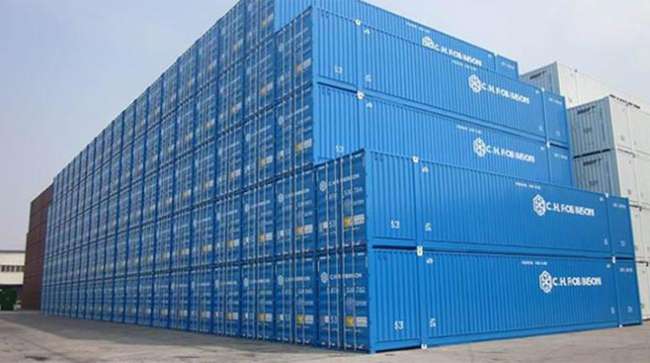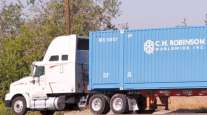Staff Reporter
C.H. Robinson Profit Jumps on Higher Seaborne Prices

[Stay on top of transportation news: Get TTNews in your inbox.]
C.H. Robinson Worldwide profit in the second quarter of 2024 jumped 29.7% year over year as a result of higher seaborne services pricing, a bigger margin on truckload and less-than-truckload shipments and a 10.8% decrease in head count.
The logistics and shipping company reported a profit of $126.25 million in Q2, up 29.7% from $97.32 million in the same period a year earlier. Diluted earnings per share in Q2 increased 29.6% year over year to $1.05 from 81 cents.
C.H. Robinson ranks No. 2 on the Transport Topics Top 100 list of the largest logistics companies in North America.
Eden Prairie, Minn.-based C.H. Robinson saw revenue increase 1.4% year on year to $4.48 billion from $4.42 billion, with the main factor being an increase in seaborne services prices, which was partially offset by lower pricing for truckload services.
The decrease in truckload pricing was the result of an excess of capacity, the company said.
C.H. Robinson’s trucking operations, known as North American Surface Transportation, posted a 2.9% decrease in revenue to $2.9 billion from $3.08 billion in the year-ago period.
The company’s average truckload linehaul rate per mile, excluding fuel surcharges, decreased around 2% year over year in Q2, while truckload linehaul cost per mile, excluding the surcharges, decreased about 3.5%, it said, without providing any more data. NAST overall volume growth increased 1.5% year over year.
In addition to higher revenue, C.H. Robinson operating expenses decreased 4.4% to $509.3 million from $532.9 million with personnel expenses falling 4.3% to $361.2 million from $377.3 million as the size of the workforce was reduced.
“Our second-quarter results reflect a higher quality of execution and performance, as we continue to implement the new Robinson operating model. And although we continue to fight through an elongated freight recession, we are winning and executing better at this point in the cycle,” CEO Dave Bozeman said.
C.H. Robinson announces financial results for the second quarter of 2024. Learn more here ➡️ https://t.co/4W6XxmB6Ti pic.twitter.com/G0UjSj0IKk — C.H. Robinson (@CHRobinson) July 31, 2024
“Our truckload business grew market share for the fourth consecutive quarter, and we took share the right way, with margin improvement in mind. And our adjusted income from operations increased 32% year over year for the full enterprise,” he added.
When it comes to the revised operating model, Bozeman said it was rooted in lean methodology to improve the level and consistency of the company’s operational execution.
“The Robinson operating model starts with an enterprise strategy map that lays out the key strategies that we need to execute on to drive profitable growth and improve the operating income of the business,” he told analysts during the company’s quarterly earnings call, with at least monthly scorecards for each division.
“Scorecard metrics are reviewed, and there’s a binary view of whether they are on track. The metrics are green if they’re on track and red if they’re not on track. There is no yellow,” he added. “We’re coaching our people to embrace and attack the red with countermeasures or action plans to solve problems faster, which is driving improvements in execution.”
Investors responded favorably to results and cost cutting, with C.H. Robinson’s share price jumping as high as $98 in after-hours trading from a market close of $89.05 before surging through $103 after the market opened Aug. 1.
A deal announced in the run-up to the earnings release is likely also a factor. Berlin-based freight forwarder Sennder Technologies bought C.H. Robinson’s European surface transportation business for an undisclosed sum July 31. The deal is expected to close in the fourth quarter.
“This move is consistent with our strategy to drive focus on profitable growth in our four core modes of North American truckload and LTL and global ocean and air. Growth needs to be highly scalable within our model to create the most value for our stakeholders,” Bozeman said.
Sennder acquired Uber’s European freight brokerage business in 2020. “With this acquisition, we’re ready to compete in the ‘champions league’ of logistics, where scale and volume are crucial for setting the right pricing and operational efficiency,” Sennder CEO David Nothacker said.
Want more news? Listen to today's daily briefing above or go here for more info
Looking forward, C.H. Robinson executives say the outlook for the North American trucking market is opaque.
“At this point, it’s hard to say whether the muted seasonality that we saw in Q2 will continue into Q3,” NAST President Michael Castagnetto told analysts.
“From a market balance perspective, we continue to be in a drawn-out stage of capacity oversupply. Although carrier attrition is occurring, it remains at a slower pace and not enough to materially impact the overall market,” Castagnetto said.
“Load-to-truck ratios did increase in June and put upward pressure on spot rates, but it was largely regional and related to produce volumes in the southern half of the U.S. in July,” he said, adding, however, that load-to-truck ratios had retreated to levels seen in April and May.




